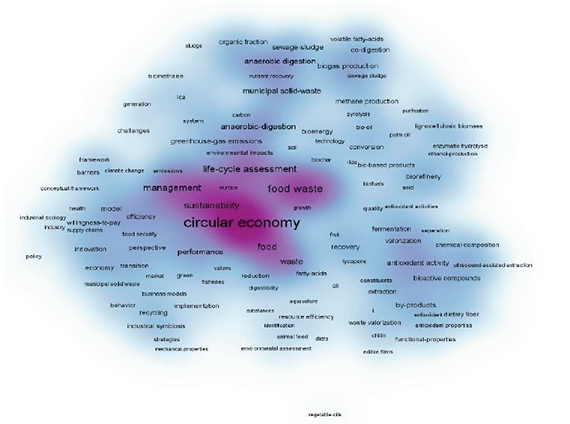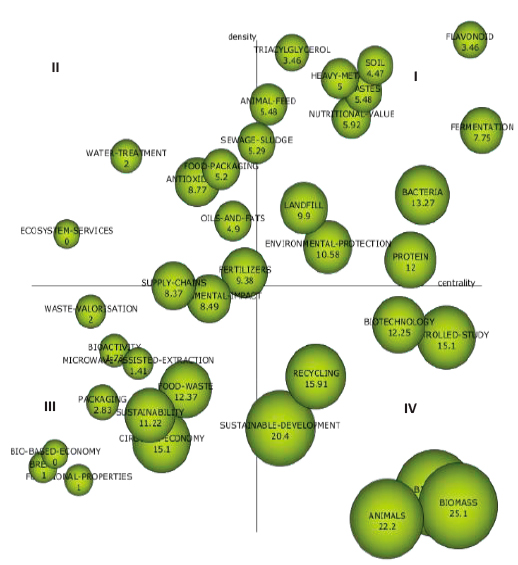1. Introduction
The “Responsible production and consumption” objective in the 2015 Sustainable Development Goals (United Nations) has configured a scenario wherein sustainability in production and consumption permeates the development of the economic system. In this perspective, multiple alternatives arise for productive development under circular economy approaches and their potential for value creation by shifting from linear production to closed cycles whereby the inputs generated in different phases or processes are reincorporated.
For Ghisellini, Cialani, and Ulgiati (2016), Geissdoerfer, Savaget, Bocken, and Hultink (2017), and Kirchherr, Reike, and Hekkert (2017), the circular economy is a combination of processes aimed at reducing, reusing, and recycling in the production cycle. Such a production approach leads companies and industries to broadened possibilities for creating value in the economic, environmental, and social dimensions regarding awareness and responsibility for their internal and external actions.
Kalmykova, Sadagopan, and Rosado (2018) highlight circular economy strategies development, design, implementation, and development in industries such as agriculture and steel, among others, recognizing these practices’ high potential for recovery and recycling in manufacturing, distribution, and consumption, thereby aiding the development of production, sectors and the environment.
Zhu, Geng, and Lai (2010) identify circular economy practices’ purpose to mitigate the present conflict between industrial development and environmental protection in the manufacturing industry in China. To this end, the authors highlight how the configuration of environment-oriented supply chains furthers sustainable development for natural resources and industrial production in growing markets.
Mirabella, Castellani, and Sala (2014) highlight the food industry’s potential for reusing waste in its production systems, emphasizing the design and implementation of circular economy-focused practices, a significant resource for value creation in the companies performing in that sector.
The production of viche, a traditional spirit drink from the Colombian Pacific, is characterized by a production system with solid potential for value creation within the framework of circular economy closed cycles. Its technological breakdown in the Colombian Pacific is characterized by developing in six stages: I. reception of raw material (panela or sugar cane); II. Grinding, or preparation of the guarapo; III. Fermentation, IV. Distillation; V. Packing; and VI. Marketing (Figure 1).
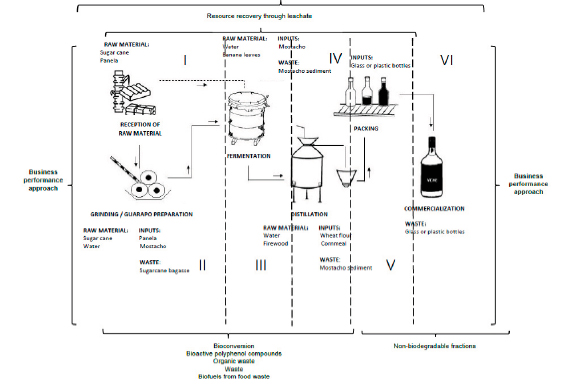
Source: Authors’ own elaboration from their own images and https://thenounproject.com/, https://asawaa.com/ http://www.fao.org/
Figure 1 Viche production process in the Colombian Pacific description
Production begins after the primary raw material is supplied, i.e., the sugar cane obtained from small local crops in charge of its harvesting and sale for different purposes. The second stage is preparing the guarapo, either by grinding the cane or melting the panela. The guarapo obtained from the cane becomes the juice that will be fermented later on. The third stage is fermentation, the biological process whereby the sugars in the guarapo become ethyl alcohol. In the distillation phase, the separation of substances from the fermented guarapo takes place in order to obtain the alcoholic beverage (viche) using a “sacatín,” an alembic.
After obtaining the drink, it is Packed in Glass or (PET) Plastic bottles; larger containers are used occasionally and as needed (18-liter containers) to supply wholesalers. Finally, packed beverages are marketed at stores, restaurants, or events for sale.
The production of viche as an ancestral drink from the Colombian Pacific is based on tradition and its recognition as intangible heritage of Colombians on September 25, 2019, the preparation of the Special Safeguarding Plan (PES per its acronym in Spanish) and the Bill before the House of Representatives of Colombia entitled “Whereby the viche/biche and its derivatives are acknowledged, promoted and protected as alcoholic, ancestral, artisanal, traditional beverages and the collective heritage of the black communities of the Colombian Pacific coast” (Gazette N° 819, 2020).
For Meza, Gorkys, and Palacios (2012), the potentialities in the production of viche depend, to a large extent, on resignifying the drink and its derivations as ethnic and traditional products and the ability to incorporate a dynamic market that requires pragmatism in the trade, in order to produce larger volumes. This is an argument frequently called upon in the marketing strategies created by individuals and communities in aguardiente-producing areas engaged, above all, in selling liquor at consumption epicenters (Meza, Gorkys, and Palacios, 2012, p. 64).
The production of viche in the Colombian Pacific is regarded as an alternative for Afro-descendant communities that see in their ancestral traditions (music, gastronomy, drinks, or midwifery) options to overcome the obstacles of the armed conflict that for decades has hindered their well-being (Sastoque and Caicedo, 2020).
Under that perspective, identifying the different phases of the production process, recognizing the ancestral value of its production to the Afro-descendant communities in the Colombian Pacific, and potential in the domestic and international market as a mass consumption product make it is possible to identify multiple opportunities for incorporating circular economy management practices in the creation of economic and environmental value with an R&D-focused production process and business development.
Per the foregoing, our analysis’s central objective is to establish what type of circular economy management practices in the food industry have furthered the creation of economic and environmental value in the production of viche in the Colombian Pacific.
For analysis purposes, the analytical and empirical model hereto is based on bibliometric techniques that facilitate reviewing the scientific knowledge published in international indexed databases in order to identify what practices are available to the food sector and which could boost the viche production process. Methodologically, the analysis of scientific documents is conducted through latent semantic analysis (ALS), as described in the following section. Subsequently, the analysis results are presented and discussed, and the main conclusions formulated.
2. Methodology
The empirical, analytical model designed for our methodological process is based on the need to identify management practices from the circular economy in the food industry that might serve as a reference for viche producers in the Colombian Pacific and promote the design of sustainable processes that harmonize scale production and sustainable environmental management over time, given the environmental characteristics of the locations where this productive activity transpires, the wealth in natural resources of the Colombian Pacific and the value as cultural heritage of producing ancestral beverages.
In this context, the central research question aims to identify what kind of circular economy management practices in the food industry foster economic and environmental value for viche production in the Colombian Pacific? The methodology was developed throughout five phases to address it: the first, “Selecting and preparing the corpus,” meaning the process of identifying, compiling, and processing scientific documents through search equations in the ISI Web of Science and Scopus databases:
Equation 1. TITLE-ABS-KEY {circular economy} OR ABS({practices management} OR practice* OR {management} OR manage*) OR KEY ({practices management} OR practice* OR {management OR manage*) OR KEY (valorisation OR valorization OR valuation OR value OR “value analysis” OR “value capture” OR “value captured” OR “value captures” OR “value chain*” OR “value co creations” OR “value co-creation” OR “value conversion” OR “value creation” OR “value flow” OR “value management” OR “value mapping” OR “value preservation” OR “value proposition” OR “value proposition architecture” OR “value proposition design” OR “value recovery” OR “value retention options” OR “value stream mapping” OR “value stream mapping” OR “value streams” OR “value uncaptured” OR “value-focused thinking” OR “value-retention processes”) OR ABS (valorisation OR valorization OR valuation OR value OR “value analysis” OR “value capture” OR “value captured” OR “value captures” OR “value chain*” OR “value co creations” OR “value co-creation” OR “value conversion” OR “value creation” OR “value flow” OR “value management” OR “value mapping” OR “value preservation” OR “value proposition” OR “value proposition architecture” OR “value proposition design” OR “value recovery” OR “value retention options” OR “value stream mapping” OR “value stream mapping” OR “value streams” OR “value uncaptured” OR “value-focused thinking” OR “value-retention processes”) AND ABS (“food industry” OR “alcoholic drinks” OR beverages OR “agroindus*” OR “food waste” OR “food supply” OR “agri-food” OR “agri-food chain” OR “agri-food supply chain” OR “agri-food supply chains” OR “agri-food sustainability” OR “agri-food waste valorization” OR “agribusiness” OR “agribusiness supply chain integration” OR “agricultural sustainability assessment” OR “agricultural practices” OR “agriculture” OR “agroindustry” OR “food by-product*” OR “food chain” OR “food handling” OR “food industries” OR “food intake” OR “food loss and waste” OR “food loss reduction” OR “food processing” OR “food production” OR “food sector” OR “food-processing industry” OR “food sustainability”) OR KEY (“food industry” OR “alcoholic drinks” OR beverages OR “agroindus*” OR “food waste” OR “food supply” OR “agri-food” OR “agri-food chain” OR “agri-food supply chain” OR “agri-food supply chains” OR “agri-food sustainability” OR “agri-food waste valorization” OR “agribusiness” OR “agribusiness supply chain integration” OR “agricultural sustainability assessment” OR “agricultural practices” OR “agriculture” OR “agroindustry” OR “food by-product*” OR “food chain” OR “food handling” OR “food industries” OR “food intake” OR “food loss and waste” OR “food loss reduction” OR “food processing” OR “food production” OR “food sector” OR “food-processing industry” OR “food sustainability”) OR ABS (“sustainable development” OR “sustainability” OR “sustaina*” OR “life cycle” OR “life cycle assessment” OR “waste management” OR “environmental impact”) AND PUBYEAR AFT 2014 AND PUBYEAR BEF 2020.
These search equations were focused on retrieving documents matching the keywords associated with “Circular economy,” “Practices or Management,” “Value creation,” and “Food industry.” The outcome of this first phase allowed forming a 547-document corpus consisting of papers, conferences, books, book chapters, reviews, and proceedings published between 2015 and 2019 (Table 1) in multiple sources such as Journal of Cleaner Production, Sustainability Switzerland, Waste Management or Resources Conservation and Recycling, among others (Table 2).
Table 1 Type of publications
| Type of publication | # |
|---|---|
| Paper | 341 |
| Review | 88 |
| Conference | 59 |
| Book chapter | 46 |
| Book | 4 |
| Editorial | 3 |
| Proceedings | 2 |
| Note | 2 |
| Short survey | 2 |
| Total documents collected | 547 |
Source: Authors’ own elaboration.
Table 2 Source name
| Source name | # | % |
|---|---|---|
| Journal Of Cleaner Production | 31 | 5.67 |
| Sustainability Switzerland | 30 | 5.48 |
| Waste Management | 17 | 3.11 |
| Resources Conservation and Recycling | 13 | 2.38 |
| Science of the Total Environment | 13 | 2.38 |
| Procedia Environmental Science Engineering and Management | 9 | 1.65 |
| Acta Horticulturae | 8 | 1.46 |
| European Biomass Conference and Exhibition Proceedings | 8 | 1.46 |
| Environmental Science and Pollution Research | 7 | 1.28 |
| Bioresource Technology | 6 | 1.10 |
| Journal Of Environmental Management | 6 | 1.10 |
| Quality Access to Success | 6 | 1.10 |
| Waste Management and Research | 5 | 0.91 |
| Agronomy For Sustainable Development | 4 | 0.73 |
| Sub-total | 163 | 29.80 |
| Others | 384 | 70.20 |
| Total documents collected | 547 | 100 |
Source: Authors’ own elaboration.
The observation window was set for analysis between 2015 and 2019 since it is the moment where analytical consolidation occurred. The corpus was purged under the approaches set forth by authors such as Tranfield, Denyer, and Smart (2003) and Dixon-Woods, Bonas, Booth, Jones, Miller, Sutton, Shaw, Smith, and Young (2006), who proposed a set of processes for the systematic review of the literature. To that end, the analysis transpired under a taxonomic revision model grounded in the analysis of the areas of knowledge and their direct relationship with the research objective, which permitted selecting 246 documents whose content matched the field of study by 85%.
The second phase of the analytical process, the “Bibliometric analysis,” consisted of data processing that allowed applying three bibliometric techniques that furthered the objective of the analysis. The first technique was developing a core category map using kernel density, prepared in the VOSviewer 1.6.15 software (van Eck and Waltman, 2010). Incorporating this technique allowed identifying the scientific documents cluster’s visualization density, thus allowing to identify the strength of the link between these categories (Van Eck and Waltman, 2010; Leydesdorff, Carley, and Rafols, 2013; Van Eck and Waltman, 2017; Sarkodie and Strezov, 2019).
The second technique elaborates a strategic map in the SciMAT v1.1.04 software (Cobo, Lõpez-Herrera, Herrera-Viedma, and Herrera, 2012). This technique means structuring the academic field through a strategic map. That map is a two-dimensional space based on the keywords’ centrality and density in the analyzed documents. Centrality measures the strength of external links with other topics, identifying how a topic is relevant to the development of the entire field of research analyzed. In contrast, density measures the strength of the internal ties between the keywords of the research topic and affords a measure of the topic’s development.
Establishing a strategic map makes it possible to identify four quadrants: the first accounts for the themes driving the specialty, given their strong centrality and high density; the second quadrant accounts for topics with well-developed internal links yet unimportant external links; the third quadrant measures underdeveloped, or marginal, yet promising topics in the field; the fourth quadrant groups the most relevant topics in the field (Cobo et al., 2012; Castillo-Vergara, Alvarez-Marin, and Placencio-Hidalgo 2018; López-Robles, Otegi-Olaso, Porto Gómez, and Cobo 2019; Moral-Muñoz, Herrera-Viedma, Santisteban-Espejo, and Cobo 2020).
The third complimenting technique was the evolutionary relationship cluster of the research topics and the calculation of the Index, prepared using the CiteSpace 5.6.R5 software (Chen, 2006; Moreau, 2010; Niazi, and Hussain, 2011; Chen, Hu, Liu, and Tseng, 2012; Sarkodie and Strezov, 2019). The evolutionary relationship cluster of the research topics is a technique that entails the longitudinal identification of the relationships between the different research topics, allowing establishing the “common grounds” of knowledge that have been configured over time.
In contrast, calculating the Index affords a measurement of a node’s combined strength of the structural and temporal properties, namely, its intermediate centrality and derived citations, thus allowing to identify the main fields of knowledge underpinning the subject of study (Chen, Chen, Horowitz, Hou, Liu, and Pellegrino, 2009; Li and Shen, 2013; Youcai, Jiangwei, and Liang, 2020; Yu, 2020).
Applying the above techniques helped identify the main empirical, analytical categories throughout the established observation window and configured the theoretical-practical basis for identifying value creation practices in the food industry under a circular economy approach.
The third methodological phase (“Deconstruction of practices”) focused on identifying the leading practices and their development, which allowed establishing which practices have been developed to create value by making a latent semantic analysis (ASL) of the corpus selected in the CiteSpace 5.6.R5 software. Latent semantic analysis is a methodological approach that makes it easy to describe the semantic content in textual data as a set of vectors, involving a matrix operation called singular value decomposition, akin to an extension of the principal component analysis. Its implementation makes it possible to identify latent the semantic dimensions that help understand the thematic structure in textual data by grouping and categorizing the available data (Tonta and Darvish, 2010; van Eck, Waltman, Noyons, and Buter, 2010; Evangelopoulos, Zhang, and Prybutok, 2012; Shen and Ho, 2020; Kim, Park, and Lee, 2020).
Finally, the findings of phases two and three are articulated into the context of the viche production process in the Colombian Pacific in the fourth phase (“Integration of analytical results”), and the potential practices to be incorporated are identified.
3. Results and discussion
According to the scientific knowledge produced in international contexts, the core categories that have shaped the field of study, the Kernel density analysis (Figure 2), describes how circular economy-framed value creation practices within the food industry have their categorical analytical basis grounded in food waste, sustainability, biomass, energy consumption, and life cycle assessment (dark density zone).
Based on the density’s categorical dispersion degree, consolidation in the product cycle and the productive inputs and outputs is identified, thereby establishing an integral development throughout the production process, where each element, or instance, at play is conducive to the creation of economic and environmental value.
Regarding the intellectual structure, the strategic map of the field of study (Figure 3) describes how the primary management practices for value creation in the food industry are presently at play within the circular economy (internally and externally) and the emerging future aspects.
According to the figure, the best developed and most important topics in the practices for value creation under a circular economy approach in the industry include (quadrant I) fermentation processes, bacteria, proteins, soil, residues, nutritional value, heavy metals, environmental protection, landfills, triacylglycerol, animal feed or sewage sludge.
This quadrant highlights the driving topics of the field, implying that these topics are externally close to other fields and in articulation with notions from other areas mediating the production process. Therefore, these concepts are the empirical basis linking value creation practices in the circular economy with other fields.
Regarding the most specialized topics in the field (quadrant II), aspects such as fertilizers, the use of oils and fats, food packing, antioxidants, water treatment, and ecosystem services are the most technical concepts. Although these aspects carry great internal importance, it is their being marginal issues to external connections to the field that characterizes them, which means that they may not contribute new applications in the future but rather would enable the development and expansion of the field, which may be connected with external or greater transdisciplinarity themes.
Parallel to the greater specificity topics, thematic aspects associated with environmental impact, food waste, supply chains, microwave-assisted extraction, bio-activities, packaging, waste recovery, functional properties, and bio base of the economy stand out for being underdeveloped (quadrant III), which means these are emerging. However, they require further theoretical-practical developments to be considered critical to the analytical development of value creation practices in the circular economy.
Finally, the intellectual structure analysis makes it possible to identify transversal themes of great importance for developing the field (quadrant IV) in biomass, biofuels, biotechnology, recycling, and sustainable development. This group highlights the field’s different long-term potential lines of development, pointing out approaches for planning and defining practices for value creation in the food industry.
When analyzing the evolutionary relationship among research topics between 2015 and 2019 (Figure 3), four research topics came to light in the field. These show the most robust consolidation throughout the study period and constitute reference points for designing and implementing circular economy practices to create value in the food industry.
Such a consolidation over time highlights their interaction, thus enriching their intra- and inter-topic development, as described with the overlap shown in Figure 4. The map’s configuration describes a specific approach in the development of the practices, allowing to establish an analytical subcategory in each of them:
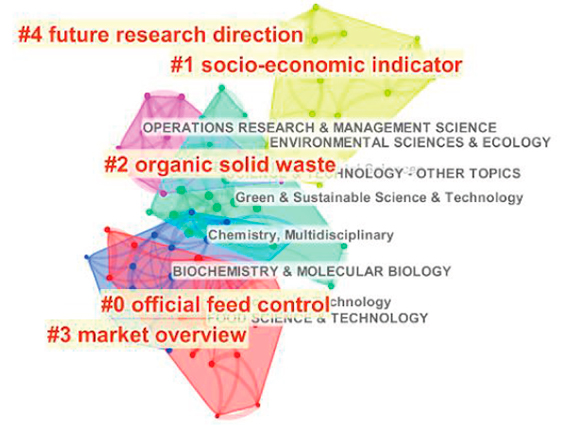
Figure 4 Evolutionary relationship cluster of research topics on value creation practices between 2015-2019
Cluster 0, “Official control institution,” (red), with a silhouette of 0.991 and 2018 at the average year formed, is characterized by grouping practices focused on implementing environmental norms and regulations in production processes.
With a silhouette of 0.937 and 2018 as the average year formed, Cluster 1 (“Socioeconomic Indicators”- green) is characterized by grouping practices focused on designing and implementing monitoring and control systems using the socioeconomic indicators that afford a measure of the development of production processes.
With a silhouette of 0.78 and 2017 as its average year formed, Cluster 2 (“Solid organic waste”- fuchsia) is characterized by grouping practices focusing on organic solid waste management and its reuse in the production cycle.
Cluster 3 “General market description” - blue), with a silhouette of 0.825 and 2018 as the average year formed, is characterized by grouping practices aimed at identifying consumer market changes, trends, and characteristics in the framework of the circular economy.
With a silhouette of 0.939 and 2018 as the average year formed, Cluster 4(“Direction of future research”- yellow) is characterized by grouping studies focusing on identifying different topics for future development in the field of study concerned with values creation practices in the food industry as framed within the circular economy.
Calculating the Index for the research topics (Table 3) helps establish the fields of knowledge with the greatest strength, centrality, and structuring capacity within the cluster destinations as configured. In this regard, engineering is the field with the most remarkable structuring capacity (0.34) in cluster 4 and Chemistry (0.34) in cluster 3.
Table 3 Index of research topics between 2015-2019
| Index | Field of knowledge | Cluster # |
|---|---|---|
| 0.34 | Engineering | 4 |
| 0.34 | Chemistry | 3 |
| 0.33 | Environmental Sciences and Ecology | 4 |
| 0.26 | Agriculture | 4 |
| 0.21 | Science and Technology | 3 |
| 0.16 | Administration and economics | 1 |
| 0.13 | Biotechnology and applied microbiology | 4 |
| 0.12 | Biochemistry and molecular biology | 2 |
| 0.10 | Green and sustainable science and technology | 3 |
Source: Authors’ own elaboration based on data from WOS and Scopus and processed in CiteSpace 5.6.R5.
Of the five research topics-configured clusters, numbers four (Direction of future research) and three (General market description) possess the highest concentration of fields of knowledge with the mos robust structuring capacity in the definition of circular economy-approach value creation practices in the food industry.
This technique made it possible to identify seven kinds of management practices focusing mainly on bioconversion, bioactive polyphenol compounds, organic waste, non-biodegradable fractions, waste, biofuels from food waste, and resources recovery through leachate (Figure 5).
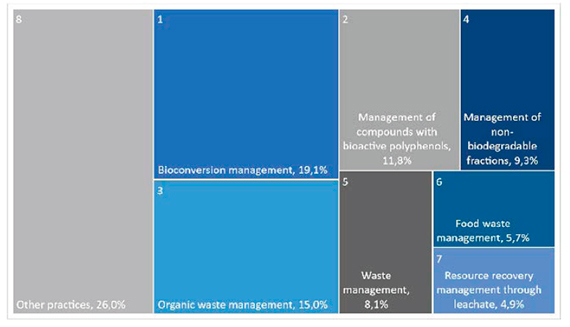
Figure 5 Identification of circular economy-approach value creation management practices for the food industry by ASL
Identifying value creation management practices, coupled with the establishment of parameters that boost the development of viche production by affording a record of the linked processes’ phases capable of redefining, further the creation of value within the activity in the economic and environmental perspectives through improvements in the use and allocation of economic and environmental resources.
Moreover, identifying this set of practices affords alternatives to propose multiple roadmaps for viche production by describing practices that concur with new products such as biofuels or bioconversion derivatives. The following section presents their main characteristics to elaborate on each of these practices.
3.1 Definition of the practices identified for value creation.
By identifying different circular economy-approach management practices in the food industry, each of those approaches will be elaborated on below in order to identify their main features and the central aspects that allow outlining reference parameters for viche producers in the Colombian Pacific.
Bioconversion management practices
Bioconversion practices focus on processing and reusing organic food-industry waste that would drive the transition to the era of the bioeconomy. Kaur, Uisan, Ong, and Ki Lin (2018), Sadhukhan, Martinez-Hernandez, Murphy, Ng, Hassim, Siew Ng, Yoke Kin, Jaye, Leung Pah Hang, and Andiappan (2018) and Maina, Kachrimanidou, and Koutinas (2017) highlight in biomass practices and methods, waste and by-product flows and green chemistry, the opportunity for the development of biorefinery through the diversification of biological products in the international market.
Zabaniotou and Kamaterou (2019) investigate knowledge-based strategies to boost the use of production and consumption wastes to obtain bio-derived chemical products such as carbon materials, fuels, and fertilizers, biorefinery outlining practices. Belaud, Prioux, Vialle, and Sablayrolles (2019), Tsakona, Papadaki, Kopsahelis, Kachrimanidou, Papanikolaou, and Koutinas (2019), and Tedesco, Conti, Lovarelli, Biazzi & Bacenetti (2019) highlight bioenergy production practices, biomolecules and biomaterials, given their effectiveness in reducing waste and their usefulness in bioconversion, thus helping mitigate natural resources over-exploitation and the emission of greenhouse gases.
Practices for the management of compounds with bioactive polyphenols
The practices for managing compounds with bioactive polyphenols focus on incorporating substances in plants and food that help deconstruct the biomass in the waste and residues from food production processes. Frommhagen, Mutte, Westphal, Koetsier, Hinz, Visser, Vincken, Weijers, Van Berkel, Gruppen, and Kabel (2017), Grillo, Boffa, Binello, Mantegna, Cravotto, Chemat, Dizhbite, Lauberte, and Telysheva (2019) and Romani, Ieri, Urciuoli, Noce, Marrone, Nediani, and Bernini (2019) emphasize the environmental results of bioactive polyphenol compounds management for the recovery of bio-resources in the industry, especially for integration into the supply chain.
For Branciari, Galarini, Giusepponi, Trabalza-Marinucci, Forte, Roila, Miraglia, Servili, Acuti, and Valiani (2017), the incorporation of practices that allow improving inputs in the protein production chain through feeding it with polyphenols bioactive compounds is at the core of efficient use of resources. In contrast, Durazzo (2018), Damian (2018) and Sosa-Hernández, Romero-Castillo, Parra-Arroyo, Aguilar-Aguila-Isaías, García-Reyes, Ahmed, Parra-Saldivar, Bilal, and Iqbal (2019) recognize production processes’ various wastes’ potential resources to encourage eco-innovation and the zero-waste economy, where waste can become raw materials for new uses and applications.
Practices for organic waste management
The practices for value creation from organic waste are characterized by incorporating anaerobic processes where these wastes are treated efficiently, producing different added-value compounds that get into the production process. Capson-Tojo, Rouez, Crest, Steyer, Delgenès, and Escudié (2016), Stoknes, Scholwin, Krzesiński, Wojciechowska, and Jasińska (2016), Stiles, Styles, Chapman, Esteves, Bywater, Melville, Silkina, Lupatsch, Fuentes Grünewald, Lovitt, Chaloner, Bull, Morris, and Llewellyn (2018), Cecconet, Molognoni, Callegari, and Capodaglio (2018), Esteban-Gutiérrez, Garcia-Aguirre, Irizar, and Aymerich (2018) and de Groof, Coma, Arnot, Leak, and Lanham (2019) regard these technologies as “promising,” given their high impact on the generation of bio-inputs per their low costs and its anaerobic digesters that help process and transform waste into eco-energies.
Practices for non-biodegradable fractions management
The practices developed around non-biodegradable fractions management focus on designing and implementing chemical, mechanical, or biological processing systems for solid waste, especially plastic. For Cooper, Giesekam, Hammond, Norman, Owen, Rogers, and Scott (2017), Haupt and Zschokke (2017), Santagata, Ripa, and Ulgiati (2017), Sadhukhan and Martinez-Hernandez (2017), Andersson and Stage (2018), Al-Addous, Saidan, Bdour, and Alnaief (2019) and Peng and Pivato (2019), the “take, make and dispose of” or “Back to Earth Alternative (BEA)” approach allows addressing solid waste as a “Product” and not as “waste,” a perspective conducive to the recycling and reintegration of waste into the production cycle.
Waste management practices
The literature analysis made it possible to identify waste management practices throughout the production and supply chain, a key element in creating environmental and economic value for the food industry. Borrello, Caracciolo, Lombardi, Pascucci, and Cembalo (2017), Berbel and Posadillo (2018), Corrado and Sala (2018), Cristóbal, Castellani, Manfredi Sala (2018), Geueke, Groh, and Muncke (2018), Ingrao, Faccilongo, Di Gioia, and Messineo (2018), Hamelin, Borzęcka, Kozak, Pudełko, and (2019) and Slorach, Jeswani, Cuéllar-Franca, and Azapagic (2019) propose incorporating practices with radically innovative technologies, and packaging reduction, reuse, recycling and redesign to avoid waste or monitoring systems between suppliers, producers and consumers to articulate the chain actors, thereby converting the linear production and consumption system into a closed cycle that reincorporates waste.
Biofuel management practices
The practices around the management of biofuels from food waste describe multiple physicochemical and biotechnological pathways for developing a biorefinery, biohydrogen, and biomethane. Pecorini, Bacchi, Albini, Baldi, Galoppi, Rossi, Paoli, Ferrari, Carnevale, Peruzzini, Lombardi, and Ferrara (2017), Grimm and Wösten (2018), Kourmentza, Economou, Tsafrakidou, and Kornaros (2018), Lucarini, Durazzo, Romani, Campo, Lombardi-Boccia, and Cecchini (2018), Chen, Osman, Mangwandi, and Rooney (2019), Loizia, Neofytou, and Zorpas (2019), Shogren, Wood, Orts, and Glenn (2019) and Torres, Kraan, and Domínguez (2019) highlight in the use of high added value biomass and bioactive compounds for energy purposes (through chemometric techniques, digestate co-granulation or the use of medium density fiberboard dust) a clear path towards the industry’s sustainability, thereby facilitating reuse in closed-cycle waste production.
Resource recovery practices through leachate
Waste from production in the food industry is regarded as a potential source of nutrients to support microbial growth. However, contamination by the microplastics and metals present along the chain threatens soils and water sources, furthering the deterioration of natural resources given their slow degradation. In this regard, ingestion by living organisms during the degradation process causes the mobility of persistent and synthetic organic pollutants through the consumption of inputs and finished goods, which hinders the sector’s development.
For Riding, Herbert, Ricketts, Dodd, Ostle, and Semple (2015), Jiang (2018), Aceña-Heras, Novak, Cayuela, Peñalosa, and Moreno-Jiménez (2019), Novelli, Geatti, Ceccon, and Gratton (2019), Ololade, Mavimbela, Oke, and Makhadi (2019), Sakarika et at (2019) and Santiago Badillo, Pham, Nadeau, Allard-Massicotte, Jacob-Vaillancourt, Heitz, and Avalos Ramírez (2019), management coupled with practices such as the “urban pre-composter,” “reduce-recycle-reuse” or the bioreactors for decentralized preprocessing (which reduces the mass and volume of waste and mitigates the generation of leachate), are conducive to the closed cycle of sustainable production and creating environmental value.
3.2 Integration of core categories, analytical categories, research topics, areas of knowledge, and ASL-identified practices
Analyzing the results obtained through bibliometric techniques and the latent semantic analysis from a reticular perspective made it possible to identify two large analytical dimensions for the formulation of value-creating practices: Business performance and R&D for the production process (Figure 6).
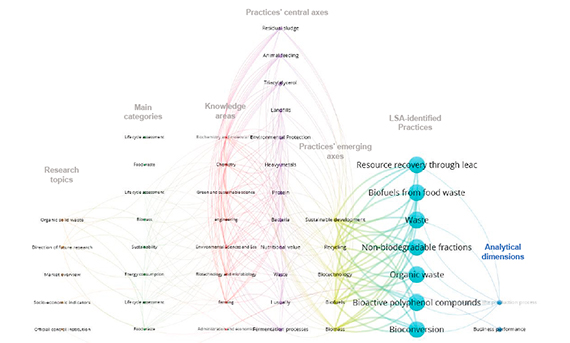
Figure 6 Integration of core categories, analytical categories, research topics, areas of knowledge and ASL-identified practices
Business performance is defined as the dimension dealing with circular economy-related practices focusing on process management, market identification, or value creation, the nature of which is managerial within the course of production. In contrast, the production process R&D dimension deals with the practices that lead to incorporating science, technology, and innovation into the production process through production processes that encourage the efficient use of natural resources and new processes and products development.
These dimensions make it possible to link the multiple practices and analytical possibilities they provide for designing central aspects in the management of viche producing companies in the Colombian Pacific. The grids, as configured, show the vertices and their adjacency following the weight of the different analytical axes on the practices. In the next section, this analytical-empirical adjacency will be carried out.
4. Conclusions
The integration of the analysis results makes it possible to account for the broad potential for creating economic and environmental value, emphasizing circular economy-oriented business development and R&D in the production process of viche in the Colombian Pacific. In this regard, the characteristics to its processing facilitate incorporating practices that encourage adopting the circular economy approach, undertaking approaches related to “reduce-recycle-reuse,” “take, make and dispose of” or “Back to Earth Alternative (BEA),” and promoting the transition from a linear production system to a closed-cycle one.
However, this transition warrants rethinking and redefining viche production, which leads to adopting a management paradigm that accepts the precepts of sustainability and “Responsible production and consumption” as proposed under the Sustainable Development Goals.
Among the alternatives for business development and R&D in the production process stand out the use of bagasse waste, lignin, cellulose, and the hemicellulose it contains in the production of paper, biofuels, and generate bioplastic for the manufacturing of commercial- or industrial-use utensils (containers). Other alternative developments lie in stillage sediments that serve as a bio-manager for fertilizers, biogas, and energy, as well as must sludge, as it can be incorporated as an additive for fertigation techniques in irrigation systems, where it can provide nutrients in the agro-industry. Additionally, the latter would also serve as a sweetener for animal feed and to produce biofuel.
Implementing this type of alternative within the proposed analysis framework integrates three relevant dimensions for development in any economic activity: 1. Technical dimension: aims to identify circular economy practices conducive to sustainability in viche production, concerning economic and environmental resources optimization. 2. Managerial dimension: it facilitates developing guidelines for managing the production units, associations or guilds, and related institutions that promote the production of the ancestral beverage by providing a set of references that enable designing plans, policies, programs, and projects for the promotion of this economic activity in the national and international market. 3. Sociocultural dimension: The social, cultural, and economic value of Afro-descendant communities’ ancestral traditions from the Colombian Pacific is recognized as an alternative to overcome the armed conflict-onset social inequalities that have affected them for decades and limited their development options in the territory.
Therefore, the analysis developed above is interesting as it allows integrating determining factors for the productive development of a region based on high-impact scientific knowledge. Such analytical initiatives rarely focus on the study of ancestral practices with a technical referencing approach for their comprehensive development, wherefore our results are unique in the country’s scientific production thanks to the articulation of the administrative sciences dimensions indicated.
Finally, based on the analysis results, it is possible to conclude the multiple perspectives for future research in the field, highlighting the need for analytical models that link productive development in communities such as Afro-descendants, where the value of their traditions constitutes an alternative for their environmental- and social-oriented economic development and contributes to their well-being. In this sense, it is crucial to advance studies that facilitate closing the existing gaps between the scientific literature and regional studies to create research opportunities that enable a better and further understanding of the rural population’s requirements, where the Urban accumulation model differs in its spatial, technical and factor endowment characteristics.














